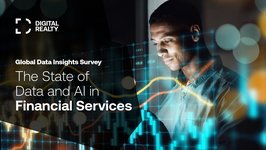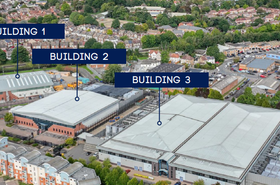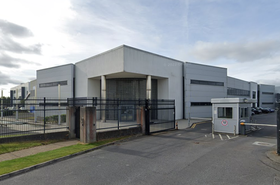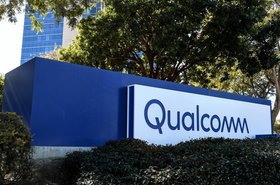John Lewis and Waitrose are iconic brands in the UK, perhaps only challenged by Marks & Spencer as the kings of middle-class retail.
The two retailers came together in 1937 to form the John Lewis Partnership (JLP), describing itself as the go-to brand for customers seeking out “quality, value, and sustainability.”
This quest for quality, value, and sustainability extends beyond the shop floor to its own IT estate, ultimately leading the retailer to look to the cloud. In 2023, JLP signed a deal worth £100 million ($127m) with Google Cloud for a five-year migration project.
Though a notable project in itself, the migration effort represents an extension of JLP’s partnership with Google Cloud, with the two companies having worked together, to different degrees, since 2012.
Paul Boyns, JLP’s head of technology strategy and architecture, said during the Google Cloud Summit 2024 that the company has actually been using the cloud to develop headless e-commerce architectures and microservices-based environments for the past seven years.
“We’ve won awards both for the outputs of those and actually for the development teams themselves,” Boyns says. “To put it into scale, about £2.5 billion ($3.17bn) of trade goes through John Lewis’ online platform every year, and about 10,000 releases through that. So this is not a new area for us.”
Despite JLP’s extensive experience with cloud computing, conducting a massive migration project has proven more difficult than expected, Boyns says.
In 2023, JLP told DCD that it had two data centers: a primary on-premise facility, and a second, third-party managed, one. Those two data centers housed the majority of JLP’s application estate at the time.
Prior to beginning its migration project, the company had undertaken some limited modernization efforts, but Boyns says other areas of the business did not need that level of transformation – the technology, be it legacy or not, was plodding along successfully, but getting older and older.
This is described by Boyns as JLP’s “long tail of technology,” a “ticking time bomb, getting slightly louder every year that it was left to age.”
Moving these aging systems to the cloud required a mindset shift for JLP. “We had previously been thinking of the cloud as just something that is going to happen over time, and attempting to guess when or if we will be totally on the cloud, to instead accepting that this change is coming,” Boyns says.
“It is going to happen. The question is, instead, do we let it happen through attrition, or do we take control and decide how it is going to happen?”
The decision to move to a cloud computing environment was partly motivated by a desire to increase the resilience of JLP’s services. Boyns explains that much of the technology in its data centers was “pretty legacy” and the challenge of keeping it modern, supportable, and secure was “getting harder as time went on.”
“The pace to deliver is much slower if you are having to buy the infrastructure to put into a data center,” he says. “There’s also transparency. Tech is a huge cost, and we wanted to ensure that cost showed up where it was delivering value to the business. We couldn’t really make that link when there was a massive amount of infrastructure in the data center.”
Beyond the technology itself is the human structure holding up the company, and the move to the cloud was also an opportunity to refresh JLP’s skills base. “The modernization of our technology also gave us the ability to invest in the skills of our people in the business,” Boyns says. “We were also able to improve sustainability, as there is no way we could match the economics of scale and efficiencies from a carbon perspective that a hyperscaler can.”
The major cloud providers all posit themselves as a more sustainable solution for customers. Google’s data centers have an average PUE of 1.1, and its best site has a PUE of 1.06.
Beyond the efforts to make data centers operationally efficient, the hyperscalers frequently engage in power purchase agreements (PPAs) to offset their emissions, and are beginning to invest in technologies such as carbon capture.
Despite this, emissions from cloud data centers continue to rise, with the AI boom meaning providers are investing in more power-hungry systems. Google’s most recent environmental report, released in July 2024, revealed that 2023 emissions rose 13 percent compared with the previous year and 48 percent over five years, for a total of 14.3 million metric tons of total carbon dioxide.
That report also showed that water consumption had grown 17 percent between 2023 and 2024 due to the “expansion of AI products and services [which] is leading to an increase in data center workloads and the associated water footprint required to cool them efficiently.”
The sustainability question is, then, one of many moving parts.
Timing was also key for JLP. As is often the case, an impending “tech refresh” cycle gave the company a strong push towards the cloud. With on-premise data centers, everything from the compute and storage to the cooling and power systems has to be kept online and, from a capex standpoint, this represents a hefty expense on a semi-regular basis.
“The opportunity is there to invest some of that money into moving to the cloud, instead of just investing it in staying exactly where you are,” Boyns says. “We found we had a window of time over the next 18 months where we were going to have to make some significant investments in compute, and it’s a limited window because you get to the point where you can’t risk not refreshing it.”
The very first thing JLP did was take two and a half days with its executives and board members where they talked about the cloud, which Boyns says involved educating them about “the terminology, the opportunities, the risks that it brings and being absolutely upfront about them.” He says this was “a very safe space to provide that awareness and education, and enable them to get answers to the questions they might have… it was probably some of the most rewarding time we’ve been able to spend with the execs.”
JLP was keen that the process not be merely a “lift and shift,” instead approaching it as an opportunity to modernize systems as they entered the cloud, while ensuring the company’s leadership had an understanding of the cost versus value of different propositions. “Cost is not a bad thing, if you are getting value out of it,” Boyns says.
At the time, JLP was around one year into the cloud migration, and during those 12 months the company had decommissioned 1,500 servers and migrated 5,600 virtual servers out of its data center and onto Google Cloud Platform. “Along the way, we also identified 79 applications that we could decommission, half of which have been decommissioned so far,” Boyns adds.
He explains: “One of the things you find with an activity like this, as you lift the covers on a heck of a lot of your infrastructure, services, and applications that you probably haven’t been putting a lot of time into, is that it’s surprising how much you are going to be able to clear out.”
The team behind the migration – be it from Google’s side or JLP’s – has now surpassed 350 people.
Google’s key account executive, Jonathon Sunburk, acknowledges that with the scale of the project, an initial “joint feasibility” study had to be done which required JLP to trust Google with sensitive information about its organization.
The cloud company provided JLP with a financial sensitivity analysis of the project – looking at the cost-benefit equation and whether it could be completed within an acceptable risk tolerance.
Sunburk also noted the value of one of its partners, IT services provider Wipro, throughout the migration process. “Wipro has enabled us to work seamlessly with our teams to help JLP get to scale, get to the company, and get to delivery quickly within that first year,” he says.
JLP has been working with Wipro since 2020 with the companies signing a deal that saw Wipro deliver technology infrastructure services such as cloud hosting, networks, end-user computing, and an internal help desk to JLP. The vendor is a premier partner of Google Cloud.
Sunburk says the migration project has so far been a success, but does not deny that there have been challenges.
“As Mike Tyson says, ‘everyone has a plan until they get punched in the face’,” he says. “We’re no different. We had a strong start but when we get down to the long tail of applications that haven’t been touched for a number of years, we know there are going to be surprises.”
He says Google and JLP relied on their strong “governance structure” which enabled them to continually refine their approach and make decisions quickly.
With the migration entering the second year of a five-year timeline, some applications remain in JLP’s data centers. Boyns says the eventual exit will be a “totemic point.”
“The objective here is modernization – modernization of the operating model and modernization of the applications,” he says. “A consequence of that is that we will be able to close those data centers.”
Boyns says the shift from capex to opex necessitated by the cloud migration led to some “difficult conversations” within the JLP team. “It meant we had to re-forecast the organization’s finances over the next few years,” he says.
Even if a major migration effort hadn’t been planned, the trend for applications gradually moving to a SaaS model means ongoing conversations about capex and opex would have been necessary anyway, Boyns says.
He says that by “getting it on the table, having what was an uncomfortable conversation, and just acknowledging and facing up to what the shift from capex to opex means for us financially,” made the cloud migration a “decision and a commitment” that everyone in the company could get behind.
With three years still yet to go on the migration project, Boyns says JLP is optimistic but realistic about what is to come.
Citing its previous awards for digital efforts, Boyns says: “I don’t know whether we’re going to be winning the same kind of awards for our enterprise cloud platform, but I think we’re going to give it the best shot that we can.”
Read the orginal article: https://www.datacenterdynamics.com/en/analysis/john-lewis-partnership-cio-cloud-migration/








